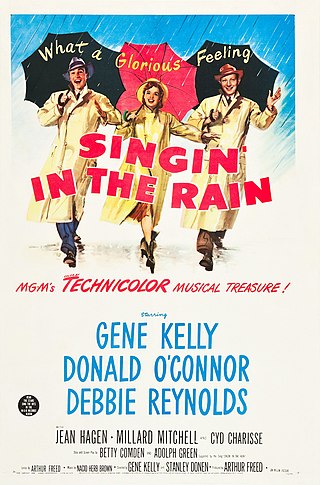
Musical film is a film genre in which songs by the characters are interwoven into the narrative, sometimes accompanied by dancing. The songs usually advance the plot or develop the film's characters, but in some cases, they serve merely as breaks in the storyline, often as elaborate "production numbers".

The Broadway Melody, also known as The Broadway Melody of 1929, is a 1929 American pre-Code musical film and the first sound film to win an Academy Award for Best Picture. It was one of the early musicals to feature a Technicolor sequence, which sparked the trend of color being used in a flurry of musicals that would hit the screens in 1929–1930. Today, the Technicolor sequence survives only in black and white. The film was the first musical released by Metro-Goldwyn-Mayer and was Hollywood's first all-talking musical.

The Divine Lady is a 1929 American pre-Code Vitaphone sound film with a synchronized musical score, sound effects, and some synchronized singing, but no spoken dialogue. It stars Corinne Griffith and tells the story of the love affair between Horatio Nelson and Emma Hamilton. It featured the theme song "Lady Divine", with lyrics by Richard Kountz and music by Nathaniel Shilkret, which became a popular hit in 1929 and was recorded by numerous artists, such as Shilkret, Frank Munn, Ben Selvin, Smith Ballew, Adrian Schubert, Sam Lanin, and Bob Haring.

John Barry Prendergast was an English composer and conductor of film music.
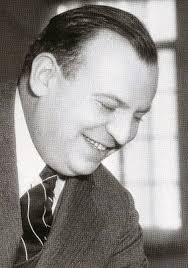
Alexander Dubin was an American lyricist. He is best known for his collaborations with the composer Harry Warren.
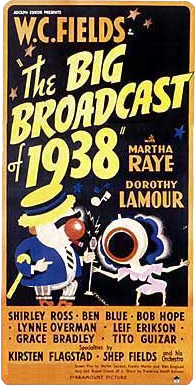
The Big Broadcast of 1938 is a Paramount Pictures musical comedy film starring W. C. Fields and featuring Bob Hope. Directed by Mitchell Leisen, the film is the last in a series of Big Broadcast movies that were variety show anthologies. This film featured the debut of Hope's signature song, "Thanks for the Memory" by Ralph Rainger.

The Awakening is a 1928 American synchronized sound feature film directed by Victor Fleming and starring Vilma Bánky. While the film has no audible dialog, it was released with a synchronized musical score with sound effects using both the sound-on-disc and sound-on-film process. The film was based on a story by Frances Marion.

Song of the Flame is a 1930 American pre-Code musical film photographed entirely in Technicolor. Based on the 1925 operetta of the same name, the film features a screenplay by Gordon Rigby adapted from the musical book written by Oscar Hammerstein II and Otto A. Harbach for the operetta. The movies also features many of the songs from the operetta which used lyrics by Hammerstein and Orbach and music by George Gershwin and Herbert Stothart. The film was produced and distributed by First National Pictures. It was the first color film to feature a widescreen sequence, using a process called Vitascope, the trademark name for Warner Bros.' widescreen process. The film, based on the 1925 Broadway musical of the same name, was nominated for an Academy Award for Sound Recording. It is part of the tradition of operetta films, popular at the time.
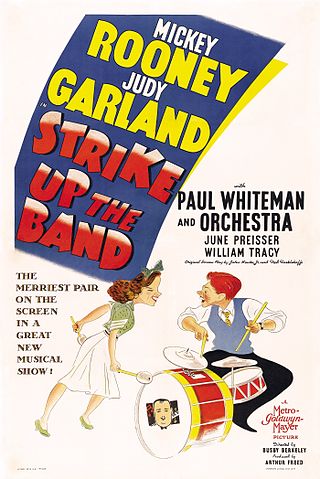
Strike Up the Band is a 1940 American musical film produced by the Arthur Freed unit at Metro-Goldwyn-Mayer. The film was directed by Busby Berkeley and stars Mickey Rooney and Judy Garland, in the second of a series of musicals they co-starred in, after Babes in Arms, all directed by Berkeley. The story written for the 1927 stage musical Strike Up the Band, and its successful 1930 Broadway revision, bear no resemblance to this film, aside from the title song.
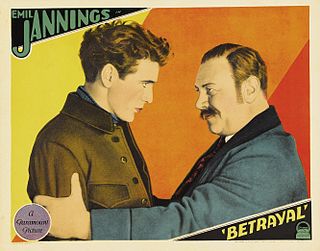
Betrayal is a 1929 American sound drama film produced for Famous Players–Lasky and released by Paramount Pictures. While the film has no audible dialog, it was released with a synchronized musical score with sound effects using both the sound-on-disc and sound-on-film process. The film is the last film without audible dialogue that was directed by Lewis Milestone, the last non-speaking role performance by Gary Cooper, the last non-speaking performance by Germany's Emil Jannings, and the only onscreen pairing of Cooper and Jannings. It is considered a lost film.

Weary River is a 1929 American sound part-talkie romantic drama film directed by Frank Lloyd and starring Richard Barthelmess, Betty Compson, and William Holden. The film was produced and distributed by First National Pictures. In addition to sequences with audible dialogue or talking sequences, the film features a synchronized musical score, singing and sound effects along with English intertitles. The soundtrack was recorded using the Vitaphone sound-on-disc system.
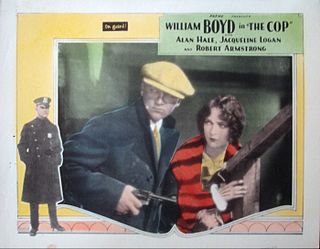
The Cop is a 1928 American silent drama film directed by Donald Crisp. Due to the public apathy towards silent films, a sound version was also prepared. While the sound version has no audible dialog, it was released with a synchronized musical score with sound effects using both the sound-on-disc and sound-on-film process. At the 2nd Academy Awards in 1930, Elliott J. Clawson was nominated for an Academy Award in the category Best Writing. Prints of the film exist in several film archives including the Library of Congress.

The Leatherneck is a 1929 American sound part-talkie drama film directed by Howard Higgin. In addition to sequences with audible dialogue or talking sequences, the film features a synchronized musical score and sound effects along with English intertitles. At the 2nd Academy Awards in 1930, Elliott J. Clawson was nominated for an Academy Award in the category Best Writing. Prints of the film exist in the archives of the Library of Congress and at George Eastman House.

Waterfront is a 1928 American synchronized sound comedy drama film released with sound effects and music, produced and released by First National Pictures. While the film has no audible dialog, it was released with a synchronized musical score with sound effects using the sound-on-disc Vitaphone process. The film was directed by William A. Seiter and starred Dorothy Mackaill and Jack Mulhall, then a popular duo under the First National banner.
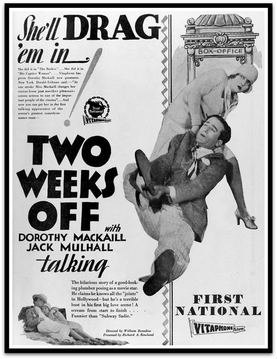
Two Weeks Off is a 1929 American sound part-talkie comedy film directed by William Beaudine. In addition to sequences with audible dialogue or talking sequences, the film features a synchronized musical score and sound effects along with English intertitles. The soundtrack was recorded using the Vitaphone sound-on-disc system. A complete nitrate print survives at UCLA.

Wonder of Women is a 1929 American sound part-talkie pre-Code drama film directed by Clarence Brown and starring Lewis Stone, Leila Hyams, and Peggy Wood. While the film has a few talking sequences, the majority of the film features a synchronized musical score with sound effects using both the sound-on-disc and sound-on-film process. It was nominated for Best Writing at the 2nd Academy Awards.

Varsity is a lost 1928 American sound part-talkie comedy film directed by Frank Tuttle, written by Howard Estabrook, George Marion Jr. and Wells Root, and starring Charles "Buddy" Rogers, Mary Brian, Chester Conklin, Phillips Holmes, Robert Ellis and John Westwood. In addition to sequences with audible dialogue or talking sequences, the film features a synchronized musical score and sound effects along with English intertitles. The soundtrack was recorded using the Western Electric sound-on-film system. The film was released on October 27, 1928, by Paramount Pictures.
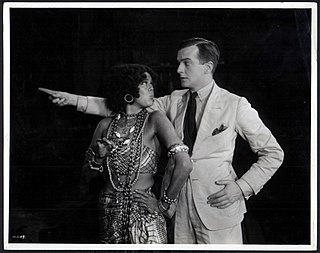
White Cargo is a 1930 sound part-talkie British drama film directed by J.B. Williams and starring Leslie Faber, John F. Hamilton and Maurice Evans. While the film has a few sequences with audible dialog, the majority of the film featured a synchronized musical score with sound effects. The majority of the film was photographed at Twickenham Studios, while the talking sequences were filmed at Whitehall Studios, Elstree which were wired for sound recording.

New Orleans is a 1929 American sound part-talkie drama film directed by Reginald Barker and starring Ricardo Cortez, William Collier Jr., Alma Bennett. In addition to sequences with audible dialogue or talking sequences, the film features a synchronized musical score and sound effects along with English intertitles. The soundtrack was recorded using the Tiffany-Tone sound-on-film system using RCA Photophone equipment. The was produced and distributed by the independent Tiffany Pictures.

Whispering Winds is a 1929 American sound part-talkie pre-Code drama film directed by James Flood and starring Patsy Ruth Miller, Malcolm McGregor and Eve Southern. In addition to sequences with audible dialogue or talking sequences, the film features a synchronized musical score and sound effects along with English intertitles. The soundtrack was recorded using the Tiffany-Tone sound-on-film system using RCA Photophone equipment.




















